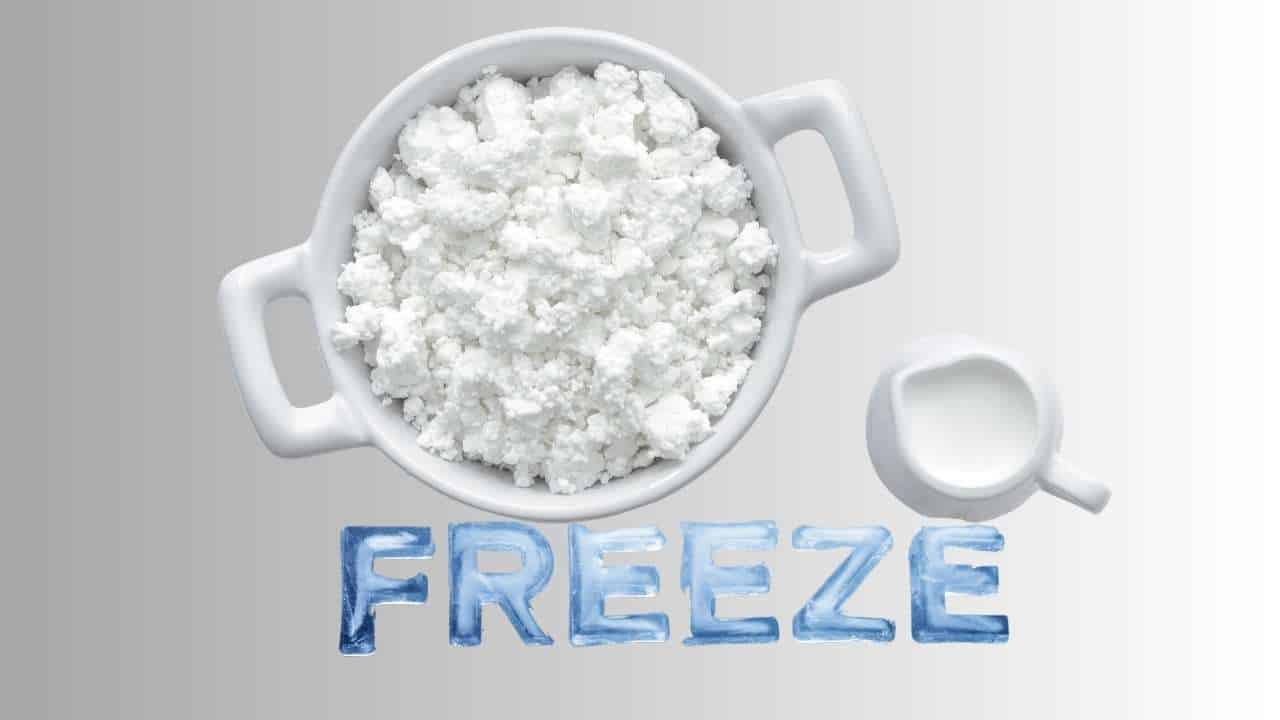The Ultimate Guide to Freezing Cottage Cheese
Cottage cheese is a versatile dairy product enjoyed by many. Cottage cheese is very nutritious. Have you ever wondered; can you freeze cottage cheese? Here we will provide you with essential information on freezing, thawing, and using frozen cottage cheese.
Can You Freeze Cottage Cheese?
Yes, you can freeze cottage cheese. However, it’s crucial to understand that freezing cottage cheese can lead to some changes in its taste and texture. Let’s explore why this happens and how to freeze cottage cheese properly.
Why Does Cottage Cheese Change Texture When Frozen?
Cottage cheese is a cheese with high moisture content. When it undergoes freezing, the water within the cheese freezes and expands, forming ice crystals. These ice crystals can disrupt the curds of the cheese, resulting in a slightly grainier texture compared to fresh cottage cheese.
How to Freeze Cottage Cheese
Properly freezing cottage cheese is the key to preserving its quality. Here’s a step-by-step guide:
Gather Your Resources
To keep the cottage cheese, you’ll need an airtight container or a freezer bag. Make sure that the bag or container is spotless and smell-free.
Portion and package
Divide the cottage cheese into servings that you can use all at once. Frequent thawing and refreezing can eventually degrade the quality. Fill the bag or container with the portions.
Take Out Extra Air
Before sealing the container or bag, remove as much air as you can to avoid freezer burn. For the greatest outcomes, you can use a Hoover sealer.
Date and Label
The bag or container should be marked with the date of freezing. This makes it easier for you to monitor how long something has been in the freezer.
Freeze Cottage Cheese
Make sure the container or bag is on a flat surface before placing it in the freezer. For best quality, freeze the cottage cheese for up to three months.
How to Thaw Cottage Cheese from Frozen
Cottage cheese that is frozen needs to be patiently thawed. Here’s how to do it properly:
First, refrigeration
Place the frozen cottage cheese in the fridge and let it thaw there for the next day. The texture of the cheese is maintained by slow thawing in the refrigerator.
Stir well
Give the cottage cheese a slight swirl when it has completely thawed to spread the moisture. This lessens the likelihood of texture alterations.
Frozen Cottage Cheese Uses
In several recipes, frozen cottage cheese can be a useful component, including:
Smoothies: To provide a creamy, protein-rich boost, stir in some frozen cottage cheese. Add it to the batter for waffles and pancakes to make them fluffier.
Muffins: Make your muffin recipes more moist and decadent.
Casseroles: Add it as a savory layer for extra creaminess in casseroles. Examine incorporating it into cheesecakes, muffins, and other baked goods.
Spreads and Dips: Incorporate a distinctive twist into your delectable spreads and dips.
Useful Advice for Frozen Cottage Cheese
Follow these recommendations to get the most out of your frozen cottage cheese:
Drain Extra Water: If any extra water is gathered during thawing, drain it before using it in recipes.
Adjustments to recipes: If a recipe calls for fresh cottage cheese, be ready to make a few changes. If you want to make up for the moisture lost from frozen cottage cheese, you might need to add more liquid or fat.
Avoid Cottage cheese that has been thawed may lose more of its texture if it is refrozen. Once it has thawed, it is preferable to utilize it all at once.
Like and subscribe to us!
